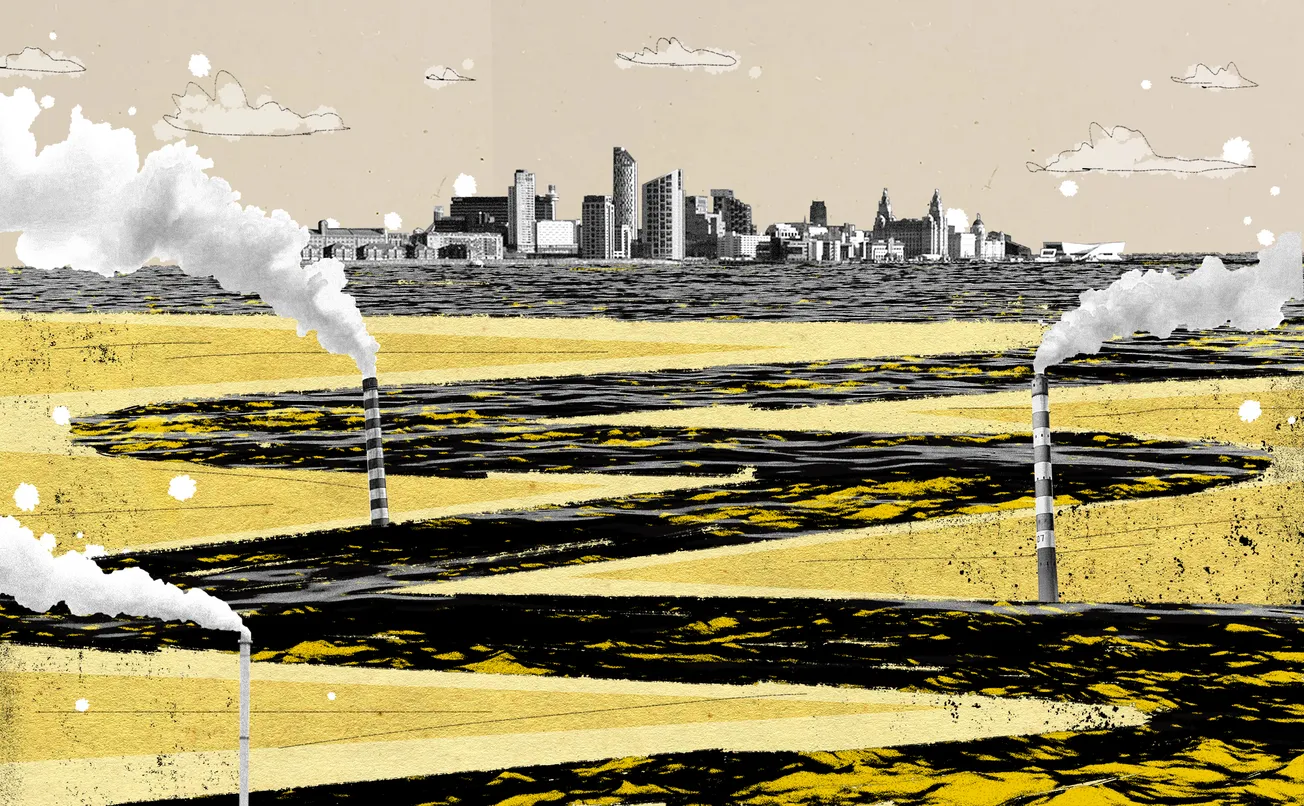The Mersey’s clean-up cost £8 billion. So why is it still so dirty?

It was meant to be “the greatest river recovery in Europe”, but experts maintain it’s still a threat to public health
Dear readers – the River Mersey is our “lifeblood”, as metro mayor Steve Rotheram is fond of saying. At the height of British imperial power, it helped make Liverpool an international trading port – the famed “second city” of the Empire – and Birkenhead an important shipbuilding hub.
But like a thriving Victorian tycoon gone sclerotic on too much Madeira and rich cheese, this main artery between Stockport and the Irish Sea became clogged with pollution. By the 1970s, our spiritual predecessors at the Liverpool Daily Post estimated the cost of cleaning up the river to make it swimmable for man or fish at £100 million. The following decade, Michael Heseltine, Margaret Thatcher’s environment minister, was told £2 billion was a more likely figure.
These eye-watering numbers turned out to be optimistic. Over 25 years, United Utilities and their predecessors North West Water say they spent around £8 billion between them. But the Mersey Basin Campaign, as the project to nurse the river back to health came to be known, was seemingly a success. Last year, Mike Duddy of the Mersey Rivers Trust called the Mersey’s comeback “the greatest river recovery in Europe," now home to multiple species of fish, birds, and aquatic and semi-aquatic mammals.
But further developments have disrupted the flow of this triumphal narrative. Last year, a study from Durham University suggested that sewage pollution levels in the Mersey Estuary are at 1980s levels. One expert said the river was still "a hot spot for sewage dumping" and “a threat to public health”.
Liverpool’s world-famous river is synonymous with the city and wider region. It lent its name to everything from cultural movements like Merseybeat to institutions we take for granted such as Merseytravel – not to mention the name of our ceremonial county itself. So just what is happening beneath its surface?
For the latest edition of Answers in The Post, Laurence speaks to experts and public bodies to get to the bottom – or riverbed – of the story. But first, your regularly scheduled briefing.
Hello there! Want exclusive access to the best of The Post? Sign up to our free mailing list to access some of our award-winning investigations, cultural reads, Answers in The Post and analysis of the issues that matter most to Merseyside.
You’ll be joining 32,000+ readers already on our list, and you'll also be supporting us in our mission to deliver a renaissance in high quality local journalism. Hit that button to sign up for free today.
Your Post briefing
Four ministerial envoys have officially been dispatched to work with Warrington Council. Earlier this year, serious concerns were raised about the local authority’s debt levels and commercial activities, leading to government intervention — with strong parallels to neighbouring Liverpool City Council’s government intervention back in 2021. As it stands, Warrington Council is in around £1.8 billion worth of debt; each of the envoys hired to assist the council will cost around £1,100 per day, and they are set to remain in Warrington until 2030.
Liverpool Council may begin using Houses of Multiple Occupation (HMOs) to tackle the city’s growing homelessness problem. The council said it was reviewing its approach to reducing rough sleeping after facing an “unprecedented demand” for housing in the city — in part prompted by a rise in no-fault evictions and rising rents. This includes exploring options to use HMOs, studio flats and other properties as temporary accommodation.
And good news for businesses and residents near Bramley-Moore Dock. Liverpool Council has back pedalled on its decision to impose a traffic order within a half-hour walking radius of the new stadium year-round. Instead, separate non-event day parking restrictions will be introduced, and extended waiting times of up to four hours when Everton are not playing. On top of this, there will also be additional parking bays for local businesses, and new blue badge parking bays on Regent Road. Liverpool councillor Dan Barrington said the changes "reflect the invaluable input we've received from residents and businesses", and that they would "continue to listen" and make further changes if necessary.
Today’s Answers in The Post looks at the state of the River Mersey, and how pollutants from cities like Manchester and Warrington are affecting our "lifeblood".

Latest
Liverpool’s hospitality scene is changing. So why are we reluctant to shout about it?
Breaking: Councillor Colette Goulding has been suspended
Chaos at the conference
Exclusive: How a food bank siphoned £195,000 into private hands
The Mersey’s clean-up cost £8 billion. So why is it still so dirty?
It was meant to be “the greatest river recovery in Europe”, but experts maintain it’s still a threat to public health